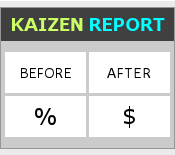
Also known as Horizontal Deployment and Sideways Expansion.
Variants include Suggestion System.
A Best Practice is that practice that has been proved to produce the best results consistently. It is the best-known way of doing something and has the potential to be replicated internally and externally. Best practices normally represent creative solutions to common and everyday problems. Implementing a best practice program within your company serves as a fast and effective way to share Lean and continuous improvement successes and accomplishments. It allows to highlight the many innovations and creative solutions that are currently in place throughout the company and beyond its borders.
Yokoten is a Japanese word that means best practice sharing across functions and businesses to enhance operational processes and performance. It involves thoughtfully sharing of successes, experiences and best practices that can be beneficial to others. The Yokoten approach was originally created by Toyota to make everything better for everyone so that the whole company benefits from outstanding ideas. Toyota firmly believes that concluding any Kaizen process should involve the sharing of best practices.
Yokoten represents a two-way exchange of best practice information between two entities. Entities can learn from other successful entities by adopting their best practices and integrating them into their processes without the need to reinvent the wheel. Entities can also develop and share their own best practices and innovative ideas. Sharing and copying best practices will duplicate success and directly have an impact on the bottom line.
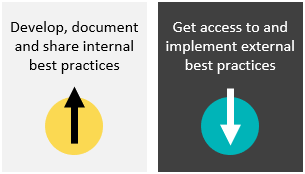
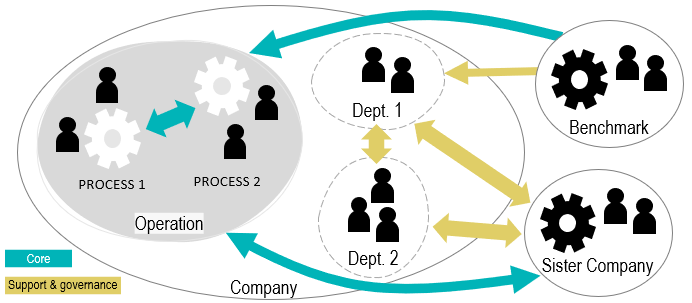

It is not enough to copy best practices exactly as they are. Teams must adapt and enhance these practices to align with their unique requirements.
Best practices should be documented before being shared with other teams. The basic elements of a best practice documentation typically include the initial condition or problem, the solution to that problem, and the obtained benefits after implementation. Additional information can also be included such as the most closely related process, relevant drawings, before and after photos, and any other information useful to communicate and facilitate replication.

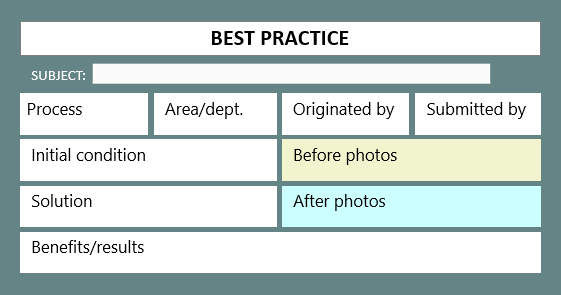
It is essential to recognize that what is considered a “best” practice may not universally apply to all contexts. Each company is distinguished by its goals, regulatory requirements, organizational culture, environment, and technology. Therefore, companies should establish specific criteria for categorizing their best practices, taking into account attributes such as cost-efficiency, uniqueness, usefulness, practicality, and sustainability. Before deciding if a particular practice is a best practice and not just a good or normal practice, ensure that it complies with the criteria defined by your company.
Leveraging technology, including databases and intranets, encourages the efficient documentation, submission, and sharing of best practices across teams, departments, and divisions. This technological infrastructure enables teams on the opposite side to access and implement best practices in their own areas in an easy manner. Additionally, information and notice boards serve as effective platforms for posting best practices, enabling widespread learning and reflection.
Example – Manufacturing Environment
The following is a documented best practice created by an operator within a manufacturing company.
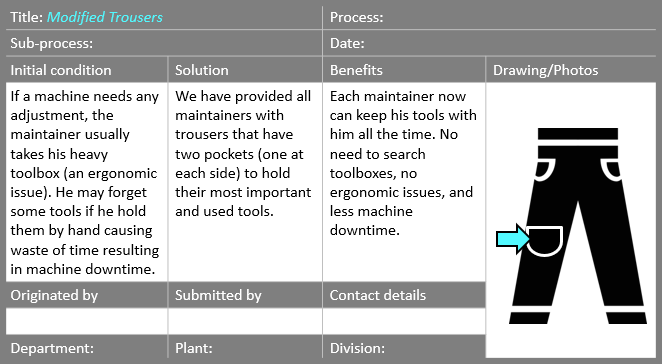

Beyond products, services and processes, Yokoten can also be applied to best results and successes related to working conditions, health and safety, and organizational culture. It can serve as a valuable tool for learning from failures as well as successes. Generally, we tend to hide our failures from others and then no one learns from them.
Wrapping Up
Everybody can benefit from the successes of others. Establishing a best practice program within your organization is a fundamental step toward achieving world-class excellence in your industry. Encouraging the development and sharing of great ideas not only enhances long-term performance but also promotes higher employee engagement. Additionally, you need to consider what other world-class organizations are doing to become even more innovative and competitive.
Other Formats
Do you want to use the slides in your training courses?

Best Practice Sharing Training Material – $18.85
Related Articles
Related Templates







